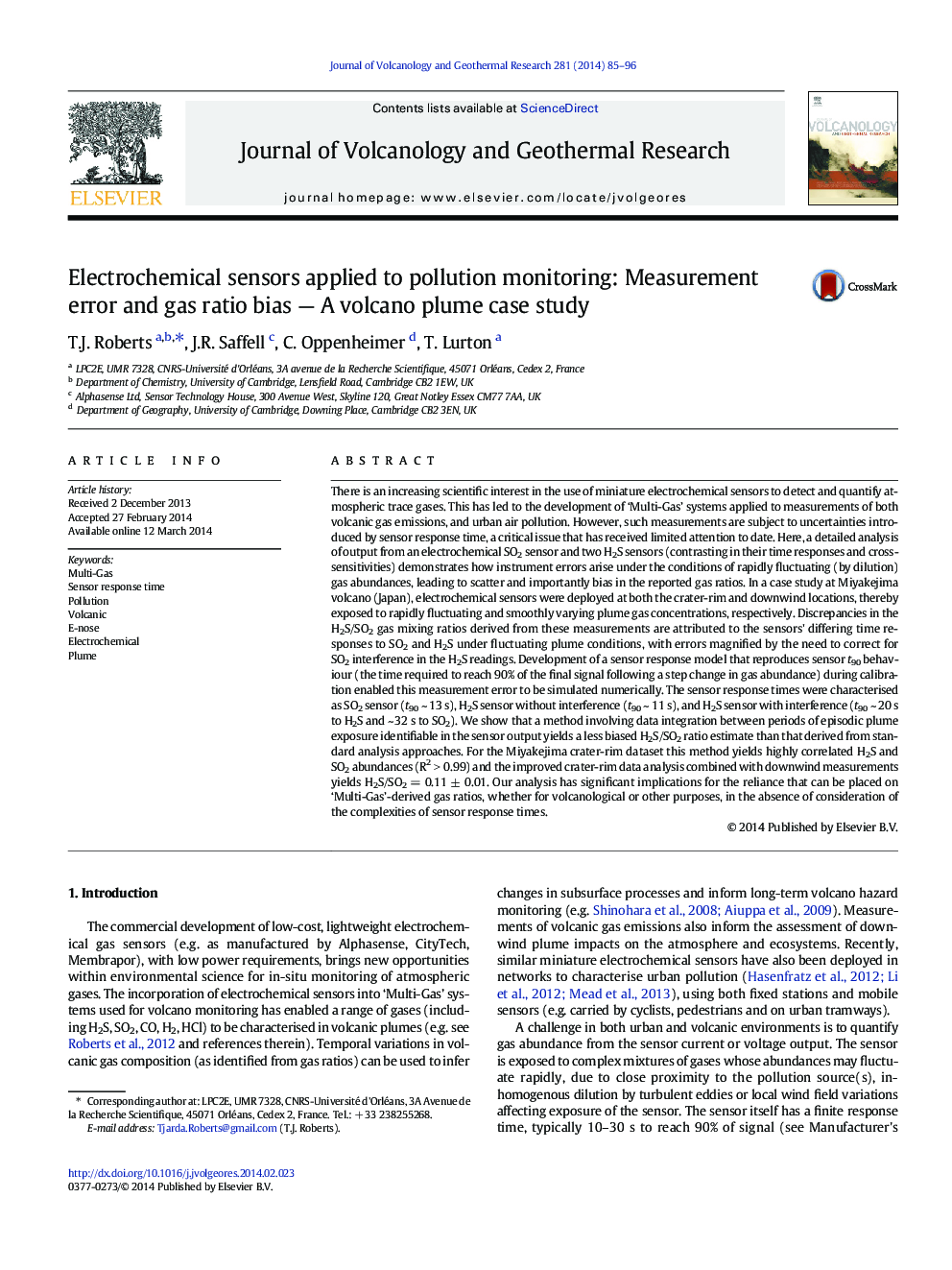| کد مقاله | کد نشریه | سال انتشار | مقاله انگلیسی | نسخه تمام متن |
|---|---|---|---|---|
| 4712386 | 1638341 | 2014 | 12 صفحه PDF | دانلود رایگان |
• Quantification of electrochemical sensor response to fluctuating gas concentrations
• Finite sensor response time causes hysteresis scatter and bias in derived gas ratio.
• Effect demonstrated in volcanic plume and reproduced by sensor response model
• Integrating sensor output across plume episodes can yield more accurate gas ratios.
• Multi-Gas ratios from sensors with mismatched response times may need revisiting.
There is an increasing scientific interest in the use of miniature electrochemical sensors to detect and quantify atmospheric trace gases. This has led to the development of ‘Multi-Gas’ systems applied to measurements of both volcanic gas emissions, and urban air pollution. However, such measurements are subject to uncertainties introduced by sensor response time, a critical issue that has received limited attention to date. Here, a detailed analysis of output from an electrochemical SO2 sensor and two H2S sensors (contrasting in their time responses and cross-sensitivities) demonstrates how instrument errors arise under the conditions of rapidly fluctuating (by dilution) gas abundances, leading to scatter and importantly bias in the reported gas ratios. In a case study at Miyakejima volcano (Japan), electrochemical sensors were deployed at both the crater-rim and downwind locations, thereby exposed to rapidly fluctuating and smoothly varying plume gas concentrations, respectively. Discrepancies in the H2S/SO2 gas mixing ratios derived from these measurements are attributed to the sensors' differing time responses to SO2 and H2S under fluctuating plume conditions, with errors magnified by the need to correct for SO2 interference in the H2S readings. Development of a sensor response model that reproduces sensor t90 behaviour (the time required to reach 90% of the final signal following a step change in gas abundance) during calibration enabled this measurement error to be simulated numerically. The sensor response times were characterised as SO2 sensor (t90 ~ 13 s), H2S sensor without interference (t90 ~ 11 s), and H2S sensor with interference (t90 ~ 20 s to H2S and ~ 32 s to SO2). We show that a method involving data integration between periods of episodic plume exposure identifiable in the sensor output yields a less biased H2S/SO2 ratio estimate than that derived from standard analysis approaches. For the Miyakejima crater-rim dataset this method yields highly correlated H2S and SO2 abundances (R2 > 0.99) and the improved crater-rim data analysis combined with downwind measurements yields H2S/SO2 = 0.11 ± 0.01. Our analysis has significant implications for the reliance that can be placed on ‘Multi-Gas’-derived gas ratios, whether for volcanological or other purposes, in the absence of consideration of the complexities of sensor response times.
Journal: Journal of Volcanology and Geothermal Research - Volume 281, 15 June 2014, Pages 85–96
